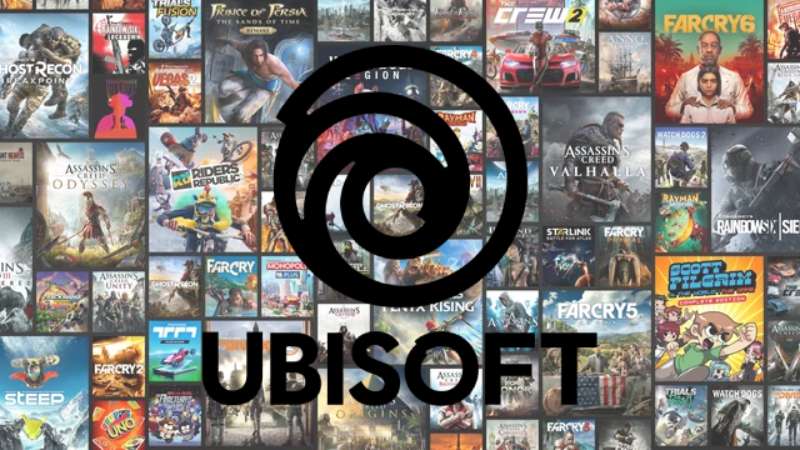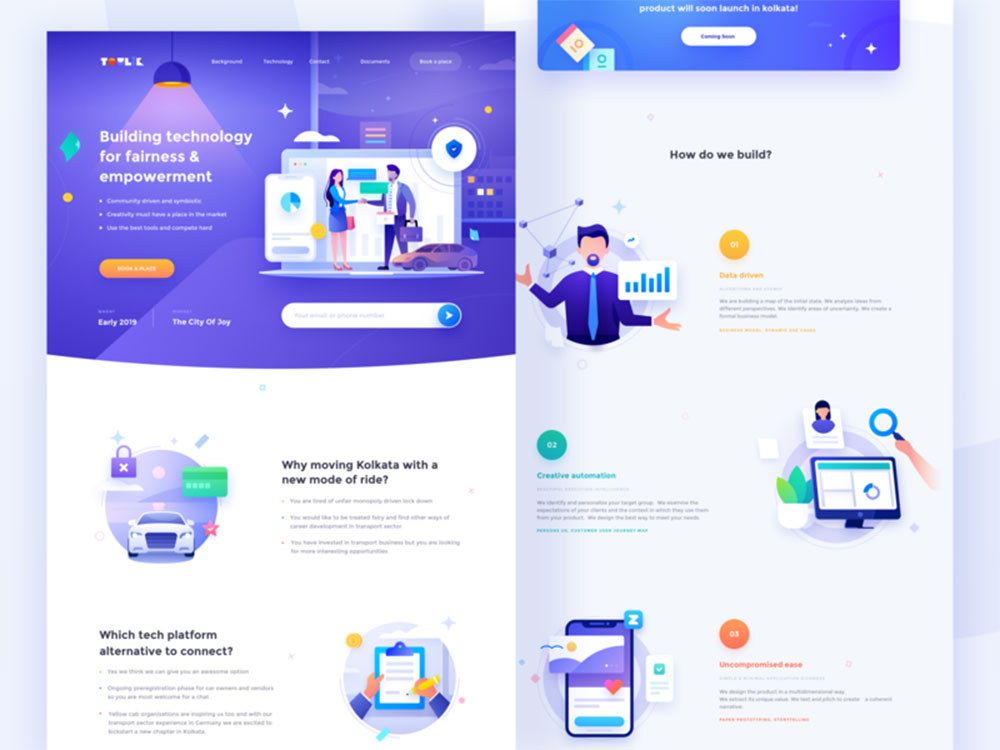15 App Store Optimization (ASO) Strategies Every App Marketer Needs to Know

What is App Store Optimization (ASO)?
As most of us are aware, the full form of ASO is App Store Optimization, and you could say that it is similar to SEO but primarily for mobile apps. It is a method that is used to increase the visibility of mobile apps of different platforms such as an Android, iPhone, iPad, BlackBerry, or Windows that are present in app stores such as App Store for iOS, Google Play store for Android, Windows Store for Windows Phone, or BlackBerry World for BlackBerry apps. This process is quite similar to search engine optimization (SEO).
Why do you need App Store Optimization (ASO)?
The Google Play Store for Android apps and the Apple App Store for iOS apps are the two most popular app stores for finding new and installing apps. The fact that they host around 4 – 5 million apps is evidence of the strong competition that exists in any field of the mobile industry. It is highly possible that your app will end up a victim of such competition if solid setups and clear strategies are not implemented– and your most efficient option is ASO.
Experts Weigh In: 15 Practical and Effective App Store Optimization (ASO) Tips
We have selected and compiled the best ASO hacks from industry professionals in order to help you in improving the effectiveness of your optimization for the Apple App Store and the Google Play Store. Find out how you can boost your search ranking by selecting additional keywords for the app’s semantic core, preparing the app metadata in the appropriate way, and more.
Here are some App Store Optimization (ASO) tips from industry experts:
- Evaluate Feedback from Beta Testers
- Include Visuals such as Quality Screenshots & App Preview Videos
- Focus on Positive Reviews & Ratings
- Research the Best Keywords
- Don’t Forget the Importance of App Icon
- Choose the Best-Fit App Name
- Forge a Rock-Solid First Impression
- Clear and Informative App Description
- Always Track Your Analytics
- Run Apple Search Ads.
- Execute A/B Tests
- Use Commas instead of Spaces
- Research your Competitors
- Settle Down the Pricing of your App
- Focus on Maximizing Downloads
Evaluate Feedback from Beta Testers
If you want to improve your app, you should get lots of feedback from beta testers and request specific suggestions as they are testing your App. Try experimenting with different combinations of metadata, such as keywords, app descriptions, icons, and so on, to discover which ones impact your search ranking the most. You should think about localization because it provides the opportunity to expand your customer base and the fact that many customers download apps locally.
After they have downloaded your app, it is important that you maintain open lines of communication with your customers. A good percentage of people who buy an app will be happy to tell their friends about it because you give them value by downloading this App without knowing it in advance.
– Tia Campbell, Director of Marketing at Practice Reasoning Tests
Include Visuals such as Quality Screenshots & App Preview Videos
When a customer visits the page of your app, it is your goal to convince and persuade them to download it. Screenshots are a valid kind of visual storytelling that can be used to illustrate app functionality, provide users with a sneak peek, and tell a compelling narrative. Since first impressions are important to half of the people, these pictures need to stand out and must be prominent. As a result, you need to pay very close attention to the specifics, such as the requirements for the layout and the dimensions. Screenshots rank second in terms of influencing someone to download an app after app ratings. As a result, screenshots are very important for conversion optimization, which is an important part of ASO. Your screenshots and videos, however, have no effect on app ratings.
Using the following screenshots, you can increase your app store visibility:
- Descriptive Captions
- Display the Brand
- Showcase your App’s UX Design
- Combined screenshots
– Alex Popa, Founder & CEO of Whizcase
Mobile devices now account for more than half of all internet video views in the United States. Therefore, adding a video to the app’s page in the app store can boost downloads and revenue. Use a video to show off the app’s features or give users a taste of the gameplay, but keep it short (a 30-second video is ideal for app previews).
– Lachlan de Crespigny, Co-Founder and Co-CEO of Revelo
Focus on Positive Reviews & Ratings
For ASO to be successful, ratings and reviews are crucial. The feedback and reviews provided by customers are taken into consideration by both Google Play and Apple. The higher an app appears in the rankings, the more relevant it appears to be, and the higher the rating it receives. Reviews are a very important ranking factor for apps in the App Store. Both the quantity and quality of positive ratings and reviews have an impact on ASO. When evaluating an app, the vast majority of users place a premium on star ratings. Many people check the app’s star rating and user reviews before deciding to download it, so I would recommend focusing on the positive reviews of your app.
– Adam Fard, Founder & Head of Design at Adam Fard UX Agency
Research the Best Keywords
When it comes to ASO, keywords are just as crucial as they are in SEO. They make it easier for people to find your app on app marketplaces where it is available. Check to see if there are any specific keyword phrases or words that are currently popular in relation to your app. Utilize those that are listed at the top of search engine results pages (SERPs).
The goal is to generate a list of keywords for you to consider using to improve the optimization of your app store listing. ASO is influenced by each and every component of an app’s listing in the relevant app store. A search engine’s ranking for an app can be improved by 80-100 spots and 10-20 positions, respectively, if relevant keywords are included in the title and description. Consider the following keywords when conducting keyword research:
- Keywords that describe the Main Features of your App
- Synonyms of your Keywords or LSI Keywords
- Keywords that Indicate your App’s Classification
– Matthew Smith, Digital Marketing Director at Right Hook Studio
Don’t Forget the Importance of App Icon
The app’s icon should be both aesthetically pleasing and interesting. Pick a color palette, a size, and a geometry that helps communicate what the app does and creates an immediate positive impression. This will distinguish your app from the millions of others that are already available on the market. However, you should make sure that the icon of your app is identifiable from that of other apps. When it comes to the layout of mobile applications, each app store adheres to its own unique set of guidelines.
The minimal size for iOS is 1024X1024 pixels. Depending on the function of the symbol, its dimensions are as follows: app icons are 180×180 pixels, navigation icons are 66×66 pixels, and tab bar icons are 75×75 pixels. As a result, you should ensure that the image looks good even when reduced in size. The minimum size needed for Android is 512X512 pixels. Google has outlined different requirements that you should adhere to.
– Aimi Davis, Chief Editor at Online Mediums
Choose the Best-Fit App Name
You should focus on optimizing your app’s title if you want to increase downloads in the PlayStore and Apple AppStore. Having a “duo” of your brand’s name and the app description is the best structure. Therefore, using your brand name in the app’s title will undoubtedly increase downloads if it is already well-known. As an entrepreneur, apps have been crucial in facilitating efficient workdays, and when deciding which apps to download, I pay close attention to the app’s title. And if the brand name is there, it’s already a big plus in my book since it seems more authentic and reliable.
One of the key elements that will impact how frequently your app is downloaded from the app store is choosing an appropriate name for it. The name of your app will always be the first thing a user will notice when they scroll down. Therefore, you should make sure that any user can tell what your app is all about with just a brief look.
For instance, you can’t name your app “XYZ: Editor” if it’s solely a photo collage app because users could think it’s a video editor. Instead, you should choose words that are aligned with the real work it does. You can either call it “XYZ: Collage your photo” or just “XYZ: Photo Collage” to make it clear what it does.
– Brian Case, Director of eCommerce & Retail at Selkirk
Forge a Rock-Solid First Impression
Make sure to forge a rock-solid first impression from the users. The moment a user lands on your app page, make sure to convince them to download it within seven seconds. Therefore you must aim to create a positive first impression. And the key here is to include high-resolution screenshots on your app page. These screenshots should focus on an exceptional feature that will let users have a glance at what the app is all about. Every time I stumbled on an app, half of my decision on whether to download it or not is based on my first impression. And when I see lots of visual content like high-resolution photos, I know that the app is worth downloading right away.
Your end goal should always be to let the users understand what your app is all about. You need to feed them with what it can do for them in order to easily integrate it into their daily life. When they truly grasp what’s in it for them once they download your app, your app store optimization efforts will surely pay off.
– Gerrid Smith, Chief Marketing Officer at Joy Organics
Clear and Informative App Description
You are only allowed to use 4000 characters for this crucial component of an app’s metadata. Users have access to the app’s main functions and information. Use smooth, conversational language to attract and encourage users to download your app. Above all, it must be understandable and instructional. If you list the following responses in bullet points, it will be simpler to recall them:
- What is the purpose of the app?
- What problem is it supposed to solve?
- How will it improve the user’s quality of life?
- How much does it cost?
The description of an app is taken into consideration by the algorithms used by app stores to determine rankings. The keywords you enter here will be used by the Google Play Store to index your app. On the other hand, keywords in Apple App Store descriptions are less beneficial for app store keyword optimization.
– Mike Owens, Digital Marketing & Growth Director at Web Hosting Advices
Always Track your Analytics
It’s extremely important to track your app analytics, just like you would for your website. With the use of mobile SDKs, you can implement services like Google Analytics for your app to keep track of important KPIs. You can also maximize your ASO efforts with SDK services for analytics, marketing, and more. It is vital to keep in mind that ASO also offers business benefits; the more users you have, the more in-app advertisements and purchases you can use and generate. This is why it is so important to focus on growing your user base. If you track and measure the effectiveness of your app using analytics, it will get more downloads, and increase the user base, and funds that it deserves.
– Alex Savy, Co-Founder, and Editor-in-Chief at ComfyNorth
Run Apple Search Ads
Speaking of Apple Search Ads, in 2022, running Apple Search Ads campaigns is vital if you want to stay afloat. It may be the only option to gain users’ agreement because no other platform will provide app install advertising to consumers. Apple Search Ads is a treasure trove of opportunity if you use it properly. Here are some best practices to run apple search ads:
- Chase branded keywords of your competitors to take some of their search traffic. Protect your branded keywords from competitors by running Apple Search Ads for them.
- This free tool for improving images, app previews, and keyword choices are available in the Apple Search Ads dashboard. That said, Creatives Sets have some limitations compared to a full-fledged A/B testing tool.
– Joe Troyer, CEO & Head of Growth at Digital Triggers
Execute A/B Tests
Both your app and your ASO need to be updated at all times because the mobile market and the Google Play Store are both constantly evolving. The best practice is to regularly check the most important KPIs, such as the number of organic and non-organic installs, keyword rankings, overall top charts by category, etc., ratings, and reviews. Update your keywords and remove any that aren’t converting, experiment more with the graphic elements, and keep running A/B tests until you identify the greatest possible combination of the elements for your Google Play Store listing. Provide the best experience you can, look out for your customers, and keep an eye on user reviews. Users can interact with Google Play, provide comments on their ratings, and even turn negative reviews around. A significant feature that benefits both searches are a high level of favorable user sentiment. Users are persuaded by the excellent quality of the app the conversion rate of your listing and Google’s preference for apps with more and better ratings.
In-app names that combine a brand name and a brief app description perform well in app stores and increase conversion rates. This tactic is used by even very large corporations, so we advise you to try it out with other apps available in the app store to see if you can achieve your goals. To broaden the possibilities for your organic growth, test this concept first with app store A/B testing before making any changes.
– Martin Lassen, Founder, and CEO at GrammarHow
Use Commas Instead of Spaces
This is a very common mistake that App marketers commit. Some developers use spaces and commas to separate terms, knowing that the App Store can read all of their keywords as one large incomprehensible keyword. Because spaces are regarded as characters, this is needless and lowers the number of keywords you can use. As separators, the App Store algorithm reads both spaces and commas. So, instead of writing “magic, amazing, to, do, list” in the Keywords field, write them as “magic,amazing,to,do,list” as suggested by iTunes Connect.
– Matt Weidle, Business Development Manager of Buyer’s Guide
Research your Competitors
It is important to both attract and drive traffic to your app if you want to achieve the maximum level of optimization for app downloads in the Play Store and the App Store. Conduct research on your competitors and look through the comment area. Then, sift through the user reviews and pick out relevant keywords. This will tell you what features users want and don’t want. Make use of these keywords as well as additional keywords that are similarly related in order to increase your visibility in search results. Including videos and visually appealing screenshots in the description is another great strategy that works really well. One of the most common types of app optimization is promoting your app on other websites and generating traffic.
– Robert Warner, Head of Marketing at VirtualValley
Settle Down the Pricing of your App
Creating a survey that asks respondents how much they would be willing to pay for the app in question is a great way to get a better understanding of how to price the app. If you are unsure of the appropriate price of your app, you can find out if users are willing to pay extra for it after they have already downloaded it by asking them if they are willing to pay more. If the answer is yes, set a price greater than what they are willing to pay in order to make money from this activity.
– Derek Bruce, Operations Director at Manchester First Aid Courses
Focus on Maximizing Downloads
Keep a focus on increasing the downloads as it will escalate the visibility of your app. To maintain the visibility of your app on the app store, you need to work on the volume of the downloads on a continuous basis. App Store Optimization is a continuous process that needs to be monitored over a period of time. When your app is optimized accurately, it will show up results by driving traffic to your app. By following the tips of App Store Optimization, which can make your app visible on both of the app stores.
Making your app free to the public at the initial stage will drastically increase your chances of getting more downloads by boosting your visibility from day one. If your app is free but offers in-app purchases, make it completely free for a little while. This will encourage people to use your app more.
– Abdul Saboor, Full Stack Developer at The Stock Dork
In Conclusion: Some Tips for Optimizing Your App Store Experience
In this post, we have shared with you 15 key ASO strategies that every marketer and developer should be familiar with in order to maximize the total number of downloads. After reading this post, you should immediately set some goals for yourself and get started on a plan to achieve them. Never forget that success can only be attained by persistence, smart planning, and an excellent product.
- Vintage Color Palettes That Bring the Past Alive - 16 April 2024
- The Ubisoft Logo History, Colors, Font, And Meaning - 16 April 2024
- Trending Tones: The Most Popular Color Palettes of the Year - 15 April 2024









